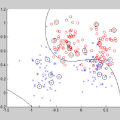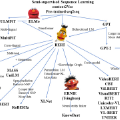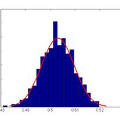Pre-trained Language Models (PLMs), as parametric-based eager learners, have become the de-facto choice for current paradigms of Natural Language Processing (NLP). In contrast, k-Nearest-Neighbor (k-NN) classifiers, as the lazy learning paradigm, tend to mitigate over-fitting and isolated noise. In this paper, we revisit k-NN classifiers for augmenting the PLMs-based classifiers. From the methodological level, we propose to adopt k-NN with textual representations of PLMs in two steps: (1) Utilize k-NN as prior knowledge to calibrate the training process. (2) Linearly interpolate the probability distribution predicted by k-NN with that of the PLMs' classifier. At the heart of our approach is the implementation of k-NN-calibrated training, which treats predicted results as indicators for easy versus hard examples during the training process. From the perspective of the diversity of application scenarios, we conduct extensive experiments on fine-tuning, prompt-tuning paradigms and zero-shot, few-shot and fully-supervised settings, respectively, across eight diverse end-tasks. We hope our exploration will encourage the community to revisit the power of classical methods for efficient NLP\footnote{Code and datasets are available in https://github.com/zjunlp/Revisit-KNN.
翻译:摘要:预训练语言模型(PLMs)作为参数化的急切学习者,已成为当前自然语言处理(NLP)范例的选择。相反,k-Nearest-Neighbor(k-NN)分类器作为惰性学习范式,倾向于缓解过度拟合和孤立噪声。在本文中,我们重新审视k-NN分类器,以扩充基于PLMs的分类器。从方法论层面上,我们建议在两个步骤中使用k-NN及PLMs的文本表示: (1) 利用k-NN作为先验知识来校准训练过程, (2) 线性插值k-NN预测的概率分布和PLMs分类器预测的概率分布。我们方法的核心是实现了k-NN校准训练,该训练过程将预测结果用作训练过程中的易/难样本指标。从应用场景多样性的角度,我们在fine-tuning, prompt-tuning范例和zero-shot, few-shot, fully-supervised setting模式下,对八个不同的最终任务进行了广泛的实验。我们希望我们的探索将鼓励社区重新审视经典方法,以实现高效的NLP。(代码和数据集可在https://github.com/zjunlp/Revisit-KNN中获得。)



